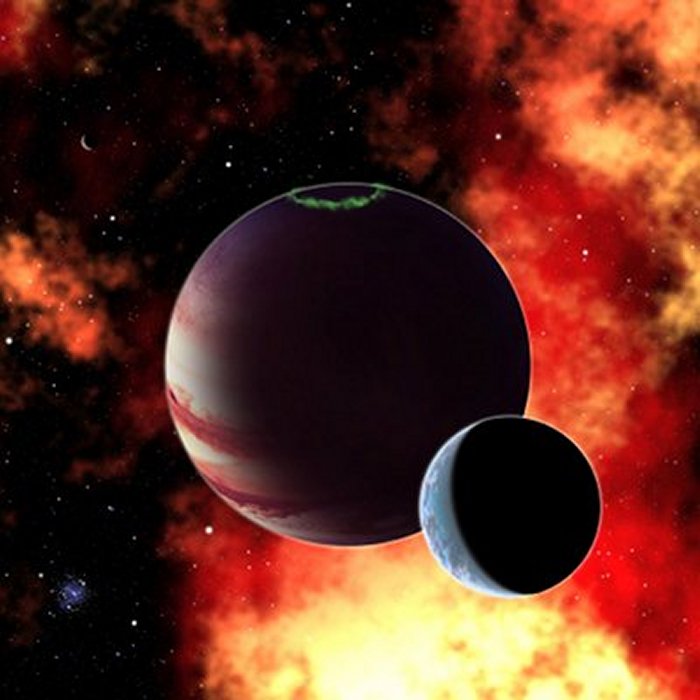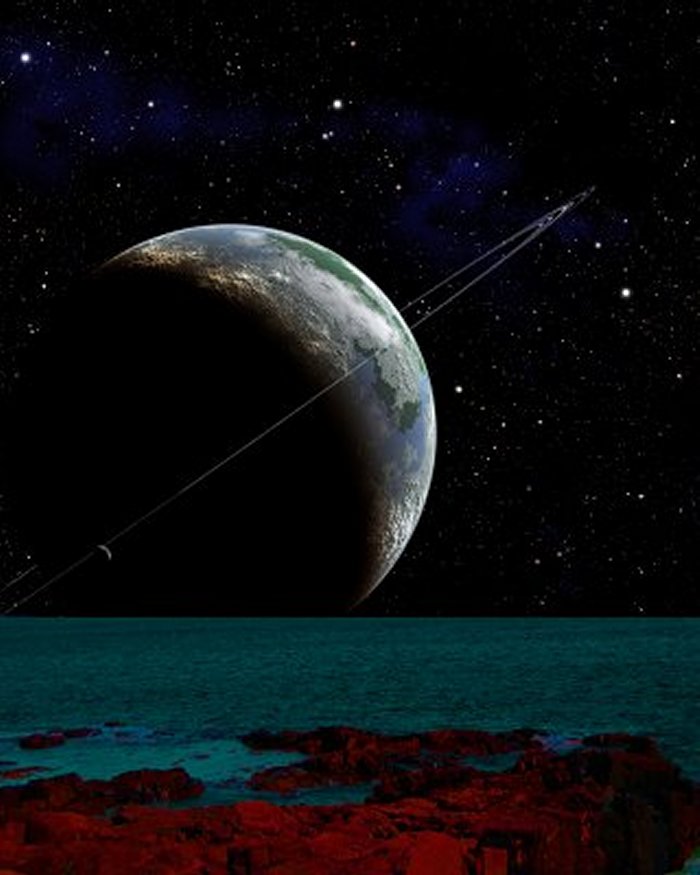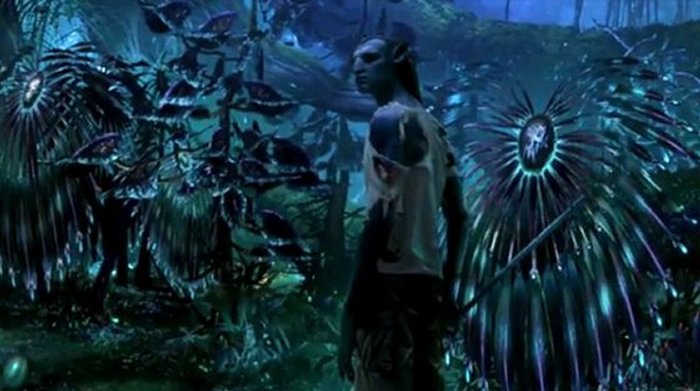Unusual Organisms Living On Pandora – A Fictional Alien World That Could Be Real
Ellen Lloyd – MessageToEagle.com – What kind of unusual organisms could exist on a world like Pandora? What could we expect to find there?
As we are about to find out the line between science fiction and science fact is thin indeed.
Pandora is the idyllic blue world featured in the movie Avatar. Its location is a real place, Alpha Centauri, the nearest star to our Sun and the most likely destination for our first journey beyond the solar system.
Life-bearing moons, such as Pandora in the movie Avatar, or the Star Wars forest moon of Endor can in fact exist. If astronomers discover such a moon nearby, the James Webb Telescope may be able to study its atmospheres and detect key gases like carbon dioxide, oxygen and water vapor.
If Pandora existed, we potentially could detect it and study its atmosphere in the next decade,” said Lisa Kaltenegger of the Harvard-Smithsonian Center for Astrophysics (CfA).
This artist’s conception shows a hypothetical gas giant planet with an Earth-like moon similar to the moon Pandora in the movie Avatar. New research shows that, if we find such an “exomoon” in the habitable zone of a nearby star, the James Webb Space Telescope will be able to study its atmosphere and detect key gases like carbon dioxide, oxygen, and water. An alien moon orbiting the gas giant planet of a red dwarf star may actually be more likely to be habitable than tidally locked Earth-sized planets or super-Earths. Credit: David A. Aguilar, CfA
When astronomers discover an alien Jupiter, they can begin looking for orbiting moons, or exo moons. A moon’s gravity would tug on the planet and either speed or slow its transit, depending on whether the moon leads or trails the planet. The resulting transit duration variations would indicate the moon’s existence.
Once a moon is found, the next obvious question would be: Does it have an atmosphere? If it does, those gases will absorb a fraction of the star’s light during the transit, leaving a tiny, telltale fingerprint to the atmosphere’s composition.
The signal is strongest for large worlds with hot, puffy atmospheres, but an Earth-sized moon could be studied if conditions are just right. For example, the separation of the moon and planet needs to be large enough that we could catch just the moon in transit, while its planet is off to one side of the star.
Kaltenegger calculated what conditions are best for examining the atmospheres of alien moons. She found that Alpha Centauri A, the system featured in Avatar, would be an excellent target.
“Alpha Centauri A is a bright, nearby star very similar to our sun, so it gives us a strong signal” Kaltenegger explained.
“You would only need a handful of transits to find water, oxygen, carbon dioxide, and methane on an Earth-like moon such as Pandora.”
“If the Avatar movie is right in its vision, we could characterize that moon with JWST in the near future,” she added.
This artist’s conception shows a hypothetical ringed super-Earth as viewed from one of its moons. Both super-Earth and moon are habitable and contain liquid water. Credit: David A. Aguilar, CfA
On an alien world like Pandora several unusual organisms may have evolved.
This is an alien world where the plants glow, shoot poison leaf tips and communicate. None of this fits exactly with our definition of “plant,” but one botanist has pieced together an ecological back-story for how plants may have evolved on this strange world.
The most striking feature of the warbonnet fern is the iridescent blue of the leaves, which contain abundant anthocyanin pigments. These pigments are light-reactive chemicals that reflect blue light and give color to the blue and purple flowers and fruit. The warbonnet fern is among the many bioluminescent flora of Pandora. Credit: James Cameron’s Avatar: The Game
The moon Pandora is depicted as a lush rainforest that may remind some of Hawaii or Borneo. But the Earthlings who venture onto this exo-moon are confronted with plants (not to mention animals) that behave in surprising ways.
“There’s a balance of familiar and fanciful,” says Jodie Holt, a plant physiologist from the University of California, Riverside.
“I think if the organisms had been too bizarre, viewers would have dismissed them as unreal.”
The plants were designed by director James Cameron and his graphic artists. However, during production, Holt was asked to provide some scientific justification for the imaginary world they were creating.
Helicoradian (also known as Loreyu, meaning “beautiful spiral”) is a zooplantae (part animal, part plant) possessing a single leaf that responds to touch by coiling up and retracting to the ground. Its neuromuscular system makes it difficult for xenobiologists to classify. Helicoradia can grow to 6-8 meters (20-26 feet) in height and 2.5 meters (8.2 feet) across. Credit: James Cameron’s Avatar: The Game
“The plants are fake, but the science is real,” she says. One the most captivating Pandoran flora is the “helicoradian” – an orange, spiraled plant that folds up and disappears when touched. Plants on earth do have touch sensitivity, says Holt, but here it has been greatly exaggerated.
“We usually only call something a plant if we poke it and it doesn’t move away,” she says.
In fact, Cameron invented his own term “plananimal” (or Zooplantae) for Pandoran life forms that blur the line between plant and animal.
However, no single characteristic distinguishes plants from other life kingdoms. We generally think of photosynthesis as the epitome of “plant-hood,” but there are parasitic plants that don’t photosynthesize their food and some non-plant bacteria that do.
Holt admits that the definition of plant has some wiggle room for whatever plant-like organisms may exist on other planets, but she herself is a novice to the imaginings of “exobotanists.”
“If I had made up the plants, I would have been too constrained by what I know,” she says.
Holt didn’t invent any new vegetation for the film, but she provided the film makers with scientific “cred.”
The name Hometree is misleading, as the structure is actually comprised of a grove of intertwined trees of the same species that have grown together, providing for mutual strength and structural reinforcement. This, coupled with Pandora’s low gravity, is what accounts for the immense height of Hometree. Credit: James Cameron’s Avatar: The Game
“When describing a plant’s appearance and characteristics, the overriding theme is plant evolution, so I asked for everything they had on the moon’s environment that might select for certain traits,” she says. It turned out Cameron had thought through a lot of this already. He told her what the Pandoran soil and atmosphere contained and about the weak gravity but high magnetic fields.
From this, she was able to provide plausible explanations for the plant life. For example, the gigantism-exhibited by the humongous “Hometrees”-is likely the result of higher levels of atmospheric carbon dioxide and lower gravitational pull on Pandora in comparison to Earth.
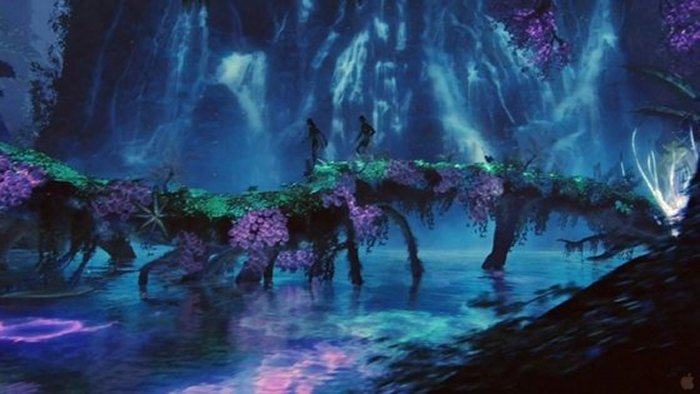
The glowing-or bioluminescence-of some plants might have been an adaption to long periods of darkness on Pandora, Holt reasoned. This light signal could attract pollinators.
However, Holt didn’t think everything that the film makers dreamed up was credible. She was told early on that the Pandoran plants communicated with each other through nerves.
“I said no way,” Holt recounts.
She advised them that a better explanation would be “signal transduction,” which is seen in terrestrial plants when-for example-a root lacking water “tells” the leaves above to wilt. How this message is sent is unknown, but it may involve electrical signals or biochemical reactions involving small molecules.
“We don’t know enough yet about signal transduction to say that Pandora’s plants aren’t using it,” Holt says.
But for all its botanical inventiveness, the film didn’t break any new ground with the color palette.
Nancy Kiang of the NASA Goddard Institute for Space Studies does research on the pigments that alien plants might use to best absorb a different spectrum of light coming from a star unlike our Sun. Her research shows that while plants on alien worlds could be green like they were in the movie, they could also be yellow, orange, black, or even near-infrared colors we couldn’t see.
“Plants on Earth are already so diverse, beautiful, and weird — carnivorous plants, cacti, basketball-size seed pods, bioluminescent algae — Pandora did not actually look all that exotic to me, especially, of course, since the plants were largely green,” says Kiang.
See also:
- Super Aliens May Already Live Inside Supermassive Black Holes
- Aliens Living On Desert Worlds
- Alien Life Inside A Postbiological Universe Where Time Has No Meaning
Plants look green to us because they mostly reflect rather than absorb that light wavelength. Holt saw some early drawings that showed the plants being all blue, but she thinks that green was later adopted to make Pandora more appealing.
Kiang says that alien plants would probably not be blue, since plants prefer to absorb blue wavelengths. The exception to this rule might be if they are bombarded with a lot of light. In that situation, a plant might use sunscreen pigments to prevent its light-harvesting apparatus from getting overloaded, and excess blue light would be reflected.
“I suppose it would have been hard to watch the movie if it were shot in the light of a sun having a different spectral quality, so Cameron had to make an aesthetic decision,” Kiang says. “I’m glad he at least has provoked thought about how life might evolve differently on another planet.”
First version of this article was originally published on March 4, 2014
Written by Ellen Lloyd – MessageToEagle.com
© MessageToEagle.com
Related Posts
-
 Rosicrucians: Facts And History About The Mysterious Secret Society
No Comments | Oct 20, 2016
Rosicrucians: Facts And History About The Mysterious Secret Society
No Comments | Oct 20, 2016 -
 How Many Realities Can Exist Inside The Holographic Universe?
No Comments | Mar 3, 2014
How Many Realities Can Exist Inside The Holographic Universe?
No Comments | Mar 3, 2014 -
 Bezvodovka: Little Known Ancient Solar Observatory In Ukraine Reveals Its Secrets
No Comments | Jan 4, 2017
Bezvodovka: Little Known Ancient Solar Observatory In Ukraine Reveals Its Secrets
No Comments | Jan 4, 2017 -
 Amazing Thirteen Ming Tombs: Gigantic Stone Animals And Human Figures Were Symbols Of Royal Power
No Comments | Dec 11, 2016
Amazing Thirteen Ming Tombs: Gigantic Stone Animals And Human Figures Were Symbols Of Royal Power
No Comments | Dec 11, 2016 -
 Pink Snow Surprises Residents In Karaghanda
No Comments | Aug 17, 2013
Pink Snow Surprises Residents In Karaghanda
No Comments | Aug 17, 2013 -
 Do Collisions Between Tropical Islands And Continents Trigger An Ice Age?
No Comments | Apr 15, 2019
Do Collisions Between Tropical Islands And Continents Trigger An Ice Age?
No Comments | Apr 15, 2019 -
 Has Extraterrestrial Bacteria Been Found On The ISS?
No Comments | Dec 14, 2017
Has Extraterrestrial Bacteria Been Found On The ISS?
No Comments | Dec 14, 2017 -
 Albert Einstein’s Secrets For Happiness Finally Revealed – Life Is More Than Ambition – The Genius Said
No Comments | Oct 26, 2017
Albert Einstein’s Secrets For Happiness Finally Revealed – Life Is More Than Ambition – The Genius Said
No Comments | Oct 26, 2017 -
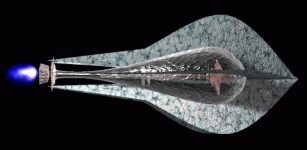 A Fleet Of Extraterrestrial Probes Might Watch Our Galaxy – Researchers Suggest
No Comments | Jul 16, 2013
A Fleet Of Extraterrestrial Probes Might Watch Our Galaxy – Researchers Suggest
No Comments | Jul 16, 2013 -
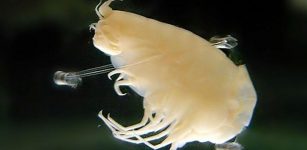 Amphipods Have Aluminum Suits Of Armor To Survive In Dangerous Underwater Environment
No Comments | Apr 30, 2019
Amphipods Have Aluminum Suits Of Armor To Survive In Dangerous Underwater Environment
No Comments | Apr 30, 2019

